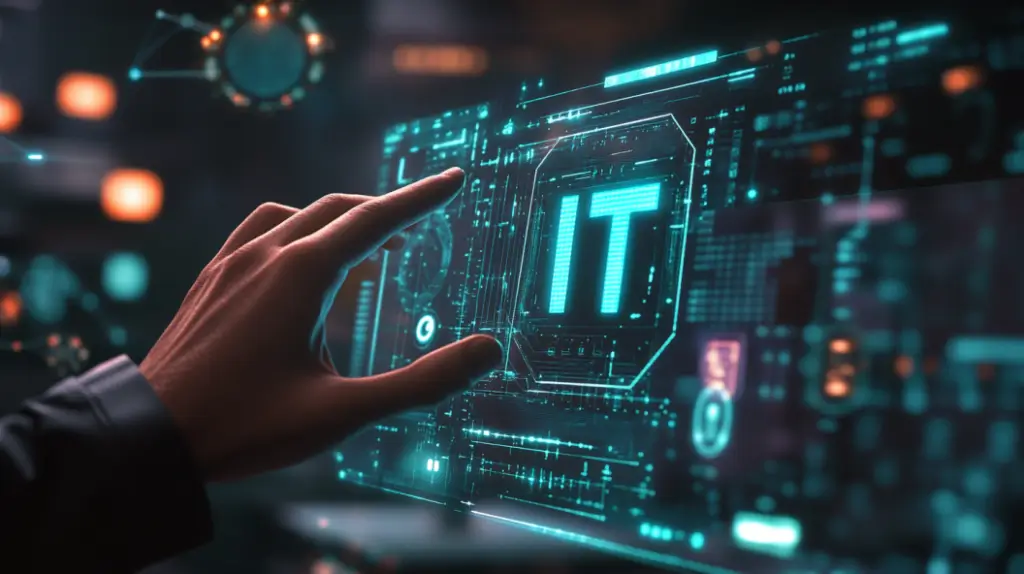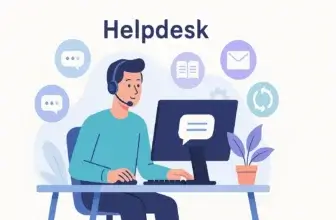
Introduction
IT Service Management (ITSM) has come a long way from its early days of manual ticketing and rigid workflows. The ITSM evolution has shifted from reactive troubleshooting and extensive human intervention to AI-driven automation and predictive analytics, optimizing service delivery across industries.
For IT managers and CIOs, staying ahead of ITSM evolution is critical. Traditional service management practices, while effective in their time, often lead to bottlenecks, inefficiencies, and growing operational costs. The shift to AI-driven ITSM isn’t just an upgrade; it’s a necessity for modern enterprises.
In this guide, you’ll explore:
- The challenges of traditional ITSM and why it falls short in today’s fast-paced IT environment.
- How automation and AI-powered ITSM tools like Freshservice, NinjaOne, ServiceNow, and monday service are reshaping IT operations.
- Real-world examples of AI-driven ITSM in industries like healthcare, finance, and government.
- How to implement AI-powered ITSM in your organization to drive efficiency, security, and compliance.
By the end of this article, you’ll have a strategic roadmap to help you transition from traditional ITSM to AI-driven automation and stay ahead in the ever-evolving IT landscape.
Traditional ITSM: Challenges & Limitations
For years, ITSM has been the backbone of IT operations, helping organizations structure their service delivery through frameworks like ITIL, COBIT, and MOF. While these methodologies provided a structured approach to managing IT services, traditional ITSM faced critical challenges that hindered efficiency and innovation.
1. Manual & Reactive Processes
Older ITSM solutions rely heavily on manual intervention, from logging tickets to assigning resources and troubleshooting issues. This reactive approach often leads to:
- Increased downtime due to slow incident resolution.
- Higher operational costs as IT teams spend time on repetitive tasks.
- Inconsistent service quality due to human error and a lack of standardization.
2. Siloed Data & Tools
Many legacy ITSM platforms operate in isolated silos, making it difficult for IT teams to gain full visibility into operations. This results in:
- Fragmented workflows between service desks, asset management, and monitoring systems.
- Inefficiencies in cross-department collaboration, slowing down response times.
- Data inconsistencies lead to poor decision-making and compliance risks.
3. Lack of Proactive Issue Resolution
Traditional ITSM is primarily reactive, meaning IT teams only address problems after they occur. This approach:
- Fails to prevent recurring issues, leading to increased incident volumes.
- Doesn’t leverage predictive analytics to identify trends and mitigate risks in advance.
- Increases IT workload, reducing the team’s ability to focus on strategic initiatives.
4. Compliance & Security Risks
Many enterprises struggle with ensuring compliance across complex IT environments. Legacy ITSM lacks:
- Automated security policies are making compliance audits time-consuming.
- Real-time monitoring and alerts for security threats.
- Integration with cybersecurity tools leaves systems vulnerable to breaches.
As the IT landscape grows more complex, organizations must embrace the ITSM evolution to remain competitive. AI-driven solutions provide the agility and automation necessary for modern IT operations.

The Digital Transformation of ITSM: Cloud & Automation
To overcome these challenges, ITSM has undergone a significant digital transformation, driven by cloud computing and automation. Today, AI-powered platforms like Freshservice, NinjaOne, ServiceNow, and monday service offer cloud-native ITSM solutions that:
✔️ Eliminate manual work with automation-driven workflows.
✔️ Enhance efficiency through predictive analytics and AI-powered decision-making.
✔️ Enable real-time collaboration with unified dashboards and integrated tools.
✔️ Improve service delivery through intelligent automation and self-service portals.
Key Trends in Digital ITSM Transformation
💡 1. Shift to Cloud-Based ITSM Platforms
- Traditional on-premise ITSM systems are being replaced by SaaS-based solutions like Freshservice and ServiceNow.
- Cloud-based ITSM ensures scalability, remote accessibility, and cost efficiency.
💡 2. Workflow Automation for Service Delivery
- AI-powered automation helps IT teams eliminate repetitive tasks (e.g., ticket assignments, approvals, change management).
- NinjaOne’s automation reduces manual intervention in IT asset management and patching.
💡 3. Low-Code/No-Code ITSM Solutions
- Tools like monday service allow IT teams to customize workflows without coding expertise.
- This flexibility speeds up ITSM adoption while maintaining governance.
💡 4. Unified ITSM & ITOM for End-to-End Visibility
- ServiceNow and Freshservice combine IT Operations Management (ITOM) and ITSM, enabling:
- Proactive monitoring of IT infrastructure.
- Automated incident resolution before disruptions occur.
- Better alignment between IT teams and business goals.
With cloud and automation becoming the foundation of modern ITSM, enterprises are now embracing the next wave of transformation – AI-driven ITSM, where intelligent automation and machine learning take IT service management to the next level.
✅ Compare ITSM Solutions in Our Full Guide
The AI Revolution: How AI & Automation Are Redefining ITSM
As organizations scale their IT operations, traditional ITSM methods struggle to keep up with rising ticket volumes, complex IT environments, and the need for real-time decision-making. This is where AI-driven ITSM solutions are transforming service management by reducing manual workloads, predicting issues before they escalate, and enhancing user experience.
🚀 Key AI Technologies Powering ITSM Today
AI and automation are reshaping ITSM in several critical ways:
1. AI-Powered Ticketing & Virtual Agents
- AI-driven ITSM tools like Freshservice’s Freddy AI and ServiceNow’s Virtual Agent automate ticket classification and responses, reducing resolution times.
- Chatbots and NLP-powered virtual agents provide 24/7 self-service, deflecting up to 60% of IT tickets.
- AI detects user intent and routes tickets to the appropriate teams instantly, eliminating bottlenecks.
2. Predictive Analytics & Automated Issue Resolution
- AI enhances proactive IT management by identifying patterns in past incidents.
- ServiceNow and NinjaOne use predictive analytics to forecast potential IT failures and apply automated fixes before disruptions occur.
3. AI-Enhanced Self-Service Portals
- AI-driven self-service portals, like those in monday service and Freshservice, empower employees to find solutions independently using smart knowledge bases.
- AI analyzes user behavior to recommend relevant solutions in real-time.
4. Automated Incident Response & Self-Healing Systems
- Self-healing ITSM allows AI-powered platforms to auto-remediate common IT issues (e.g., restarting failed services, patching vulnerabilities, and reconfiguring misconfigured devices).
- NinjaOne’s automation detects and resolves endpoint issues without human intervention.
5. AI-Driven Change & Release Management
- AI reduces the risk of failed changes by predicting the impact of IT modifications before deployment.
- Automated compliance enforcement ensures that updates and patches meet security and governance requirements.
6. Hyperautomation: The Next Evolution of AI in ITSM
- Hyperautomation combines AI, Machine Learning (ML), and Robotic Process Automation (RPA) to optimize IT workflows further.
- ServiceNow and Freshservice integrate low-code automation platforms, enabling IT teams to customize workflows without coding expertise.
- This enables faster ITSM adoption while maintaining security and governance.
As AI continues to evolve, ITSM is shifting from a process-driven model to an intelligence-driven model, where automation, machine learning, and predictive analytics optimize service delivery with minimal human intervention.
Case Studies: How AI-Driven ITSM is Transforming Industries
AI-powered ITSM is already making a measurable impact across various industries, particularly in healthcare, finance, and government. These sectors rely heavily on ITSM frameworks for compliance, security, and operational efficiency.
1. Healthcare: Reducing Downtime & Enhancing Compliance
Challenge:
- Hospitals and healthcare facilities rely on continuous uptime for critical systems like electronic health records (EHRs) and telemedicine platforms.
- Traditional ITSM struggles with managing IT incidents in real-time, leading to delays in patient care.
AI-Driven ITSM Solution:
- ServiceNow and Freshservice leverage AI-powered incident response to predict system failures before they impact patient services.
- Automated ticket routing ensures that critical issues are immediately escalated to the right IT teams.
- AI-driven compliance monitoring helps hospitals maintain HIPAA and data privacy standards.
Results:
- 35% reduction in IT downtime for healthcare systems.
- Faster resolution of critical IT issues improves patient care.
- Improved compliance tracking through AI-powered audit trails.
2. Finance: AI-Driven IT Security & Risk Management
Challenge:
- Financial institutions manage millions of daily transactions across highly regulated environments.
- Cybersecurity threats, compliance violations, and fraud require immediate IT intervention.
AI-Driven ITSM Solution:
- NinjaOne and ServiceNow’s automation proactively identify IT security risks and initiate automated incident response workflows.
- AI-driven predictive analytics detect potential compliance violations before they become legal issues.
- Self-healing ITSM applies security patches and updates in real-time without service disruptions.
Results:
- 50% faster cybersecurity incident resolution through AI-driven automation.
- Automated compliance enforcement, reducing regulatory risks.
- Enhanced fraud detection capabilities prevent financial losses.
3. Government: Automation for Citizen Services
Challenge:
- Government agencies handle a vast volume of IT service requests from internal users and citizens.
- Manual processing leads to inefficiencies, longer response times, and high operational costs.
AI-Driven ITSM Solution:
- AI chatbots and self-service portals provide automated responses to common IT requests, reducing dependency on human agents.
- Predictive analytics optimizes IT infrastructure, ensuring systems operate efficiently.
- AI-driven IT asset management reduces operational costs by automating software license renewals and system upgrades.
Results:
- 40% reduction in IT service request resolution times.
- Lower operational costs through AI automation.
- Improved citizen experience with faster, AI-driven IT support.

What’s Next for AI-Driven ITSM?
The next wave of ITSM transformation is already taking shape, with AI, automation, and hyperautomation driving new innovations. Here’s what to expect:
The Rise of Self-Healing ITSM
- AI will play a central role in automated incident resolution.
- IT systems will be capable of self-healing, fixing common issues without human intervention.
AI-Augmented IT Decision-Making
- AI will assist IT teams in making critical decisions, such as change approvals, risk assessments, and resource allocation.
- ServiceNow and Freshservice are already incorporating AI-powered recommendations to help IT leaders make smarter strategic choices.
ITSM in Hybrid & Remote Work Environments
- AI-driven ITSM will enhance remote IT support, allowing organizations to manage IT infrastructure across distributed workforces.
- Freshservice’s AI-powered ticketing already helps IT teams support hybrid and remote work models seamlessly.
How to Implement AI-Driven ITSM in Your Organization
If you’re ready to transition to AI-driven ITSM, here are the key steps to follow:
✔ Assess Your ITSM Maturity Level: Identify gaps in your current service management processes.
✔ Choose the Right AI-Powered ITSM Tool: Evaluate solutions like Freshservice, NinjaOne, Monday Service, and ServiceNow based on your organization’s needs.
✔ Adopt AI-Driven Automation Gradually: Start with AI-powered ticketing and workflow automation, then expand into predictive analytics and self-healing systems.
✔ Ensure Data Security & Compliance: Implement AI-powered compliance monitoring to align with industry regulations.
Conclusion
AI-driven ITSM is no longer a luxury; it’s a necessity for organizations looking to optimize service management, reduce costs, and improve IT efficiency. As AI continues to evolve, businesses must embrace automation, predictive analytics, and self-healing IT infrastructure to stay ahead of the curve.
By leveraging tools like Freshservice, NinjaOne, Monday Service, and ServiceNow, you can future-proof your IT operations and drive real business impact.
🔗 To explore more about ITSM tools and their capabilities, visit our in-depth guide on the Best ITSM Software.
FAQ
1. What is ITSM evolution?
ITSM evolution refers to the transformation of IT Service Management from manual, process-heavy methods to automated, AI-powered systems. This shift improves efficiency, reduces downtime, and aligns IT operations with modern business needs.
2. How is AI used in modern ITSM platforms?
AI enhances ITSM by automating tasks like ticket routing, incident response, and change approvals. It also powers predictive analytics, self-healing systems, and intelligent chatbots, helping IT teams resolve issues faster and more proactively.
3. What are the main differences between traditional and AI-driven ITSM?
Traditional ITSM relies on manual processes, static workflows, and reactive problem-solving. In contrast, AI-driven ITSM introduces automation, real-time insights, and proactive issue resolution using machine learning and analytics.
4. Why should businesses adopt AI-powered ITSM tools?
AI-powered ITSM helps reduce operational costs, accelerate incident resolution, and improve service quality. It also enables better compliance tracking, scalability, and support for remote and hybrid work environments.
5. What industries benefit most from AI-driven ITSM?
Sectors like healthcare, finance, and government benefit significantly due to their complex compliance requirements, high data volumes, and the need for 24/7 IT service availability. AI enables faster, more reliable support in these environments.
6. Are AI-driven ITSM tools suitable for small and mid-sized businesses?
Yes. Many modern ITSM platforms offer scalable AI features that adapt to smaller organizations. SMBs can benefit from automation and self-service without investing in large enterprise solutions.
7. What challenges come with adopting AI in ITSM?
Common challenges include integration with legacy systems, change management, and data privacy concerns. Organizations should assess their ITSM maturity and ensure proper training before rolling out AI features.
8. How does AI improve incident management in ITSM?
AI improves incident management by using real-time monitoring and historical data to predict issues, assign tickets intelligently, and automate fixes. This reduces response times and improves service reliability.
9. Can AI replace IT support staff in ITSM?
AI doesn’t replace IT professionals but augments their capabilities. It handles repetitive tasks so teams can focus on higher-level strategy, problem-solving, and infrastructure optimization.
10. What’s next in the future of ITSM?
The future of ITSM includes hyperautomation, self-healing infrastructure, and deeper integration with DevOps and IT Operations Management (ITOM). Expect smarter systems that require less manual input and deliver greater business value.






